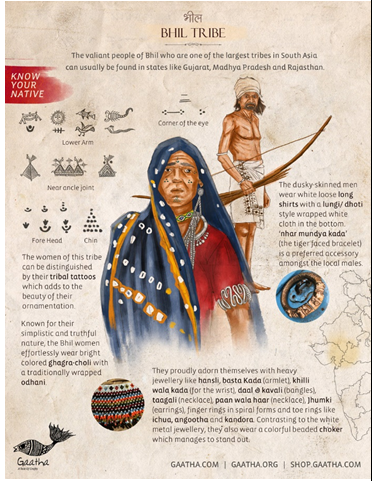

9th September 2025 (14 Topics)
Context:
The Union government is translating Bhil tribal folk tales into Hindi under a digital initiative to preserve tribal languages and culture.
Cultural and Linguistic Significance
- The initiative is part of the Ministry of Tribal Affairs’ Adi Vaani platform, which promotes tribal language documentation and translation.
- Folk tales collected from the Bhil community in Madhya Pradesh include themes of caste discrimination, intercaste love, faith, theatre, and social justice.
- Similar translations are being done for Gondi, Santali, and Mundari oral traditions.
Social Messages Embedded in Stories
- Stories highlight anti-casteism messages, e.g., “caste was never part of Sanatan Dharma” or Manusmriti verses were interpolated later.
- Narratives promote inter-caste harmony, social justice, and moral values, reflecting modern societal concerns such as farmer distress, police accountability, and education.
- Cultural promotion is linked to community identity, e.g., performances reflecting Vanvasi traditions and the worship of local deities like LokmataAhilya Devi.
Digital Governance and Policy Relevance
- The translation tool supports digital inclusion, language preservation, and cultural literacy, aligning with Digital India and tribal welfare policies.
- Makes e-booklets available online for public access, ensuring wider dissemination and archival of oral traditions.
- Encourages national integration through cultural understanding while safeguarding tribal heritage.
|
Bhil Tribe Origin and Ethnicity
Distribution
Occupation
Language
Beliefs and Religion
Festivals
|
More Articles



